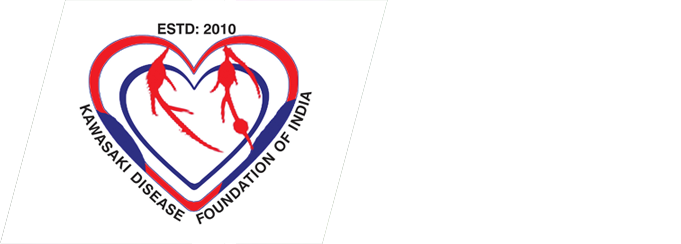Symptoms & Signs of Kawasaki Disease

Bilateral , non-exudative conjunctivitis with perilimbal sparing - "conjunctival injection".

Strawberry tongue and bright red, swollen lips with vertical cracking and bleeding.

Erythematous rash involving perineum

Erythema of the palms, which is often accompanied by painful, brawny edema of the dorsa of the hands.

Erythema of the soles & swelling dorsa of the feet.

Desquamation of the fingers.

Erythema and induration at the site of a previous vaccination with Bacille Calmette-Gurin (BCG).

Perianal erythematous desquamation
A physical examination will demonstrate many of the features listed above. Kawasaki disease often begins with a high and persistent fever that is not very responsive to normal treatment with paracetamol (acetaminophen) or ibuprofen. The fever may persist steadily for up to two weeks and is normally accompanied by irritability. Affected children develop red eyes because of non-suppurative conjunctivitis, iritis and bilateral anterior uveitis. Inflammation of the mucous membranes in the mouth, along with erythema (redness), edema (swelling) with fissures (cracks in the lip surface), desquamation (peeling) and exsudation of the lips are also evident. The oropharynx mucosa has enanthema and the tongue maintains an unusual red appearance termed "strawberry tongue" (marked erythema with prominent gustative papillae). Keratic precipitates (detectable by a slit lamp but usually too small to be seen by the unaided eye), and swollen lymph nodes may also be present and can be the first manifestation of the disease. Rashes occur early in the disease, and the cutaneous rash observed in patients with KD is non-specific, polymorphic, non-itchy and normally observed up to the 5th day of fever. Cutaneous exanthema may comprise macular-papular erythematous and fissure lesions, the most common type, in addition to urticariform type rash, purpuric, multiform-like erythema.[22] and peeling of the skin in the genital area, hands, and feet (especially around the nails and on the palms and soles) may occur in later phases. Some of these symptoms may come and go during the course of the illness. It is a syndrome affecting multiple organ systems, and in the acute stage of KD, systemic inflammatory changes are evident in many organs. Myocarditis, pericarditis, valvulitis, aseptic meningitis, pneumonitis, lymphadenitis, and hepatitis may be present and are manifested by the presence of inflammatory cells in the affected tissues.[9] If left untreated, some symptoms will eventually relent, but coronary artery aneurysms will not improve, resulting in a significant risk of death or disability due to myocardial infarction (heart attack).






